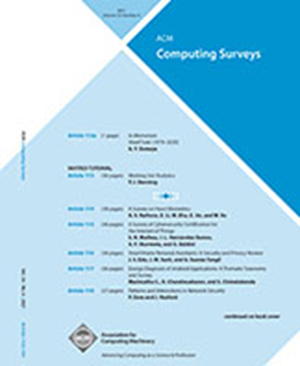Smart Water-IoT: Harnessing IoT and AI for Efficient Water Management
IF 23.8
1区 计算机科学
Q1 COMPUTER SCIENCE, THEORY & METHODS
引用次数: 0
Abstract
The treatment, monitoring and distribution of drinking water is an integral component of critical national infrastructure and therefore places continually increasing demands on Water Distribution Networks (WDNs). This domain and its sub-sectors face several major problems, namely climate change and drought-induced rises in water consumption from surface and underground reservoirs, in addition to the existence of significant water leaks during transmission to end users. These problems can be addressed by deploying Internet of Things (IoT) systems and smart distribution grids to improve the efficiency and safety of water distribution and to easily detect leaks or unauthorised consumption. This type of smart grid is referred to as Smart Water-IoT (SW-IoT), a novel, comprehensive water management concept. This review article discusses the application of IoT components and artificial intelligence (AI) in five basic categories (agriculture, water treatment, security, water distribution networks and wastewater). Relevant legislation in the EU, USA, Canada, Australia, China, Japan and India is also reviewed. In this context, the mandatory implementation of smart remote data reading solutions into the critical infrastructure of EU member states is outlined to highlight the importance of responsible water handling. The article provides a detailed analysis of the current research in SW-IoT and defines the main research challenges for future investigation.智能水-物联网:利用物联网和人工智能实现高效水管理
饮用水的处理、监测和分配是关键国家基础设施的一个组成部分,因此对配水网络的要求不断增加。这一领域及其分部门面临几个主要问题,即气候变化和干旱引起的地表水和地下水库用水量增加,以及在向最终用户输送过程中存在严重的漏水。这些问题可以通过部署物联网(IoT)系统和智能配电网来解决,以提高配水的效率和安全性,并轻松检测泄漏或未经授权的消耗。这种类型的智能电网被称为智能水-物联网(SW-IoT),这是一种新颖的综合水管理概念。本文综述了物联网组件和人工智能(AI)在五个基本类别(农业、水处理、安全、配水网络和废水)中的应用。欧盟、美国、加拿大、澳大利亚、中国、日本和印度的相关立法也进行了审查。在此背景下,概述了在欧盟成员国的关键基础设施中强制实施智能远程数据读取解决方案,以强调负责任的水处理的重要性。本文对当前SW-IoT研究进行了详细分析,并确定了未来研究的主要挑战。
本文章由计算机程序翻译,如有差异,请以英文原文为准。
求助全文
约1分钟内获得全文
求助全文
来源期刊

ACM Computing Surveys
工程技术-计算机:理论方法
CiteScore
33.20
自引率
0.60%
发文量
372
审稿时长
12 months
期刊介绍:
ACM Computing Surveys is an academic journal that focuses on publishing surveys and tutorials on various areas of computing research and practice. The journal aims to provide comprehensive and easily understandable articles that guide readers through the literature and help them understand topics outside their specialties. In terms of impact, CSUR has a high reputation with a 2022 Impact Factor of 16.6. It is ranked 3rd out of 111 journals in the field of Computer Science Theory & Methods.
ACM Computing Surveys is indexed and abstracted in various services, including AI2 Semantic Scholar, Baidu, Clarivate/ISI: JCR, CNKI, DeepDyve, DTU, EBSCO: EDS/HOST, and IET Inspec, among others.
 求助内容:
求助内容: 应助结果提醒方式:
应助结果提醒方式:


